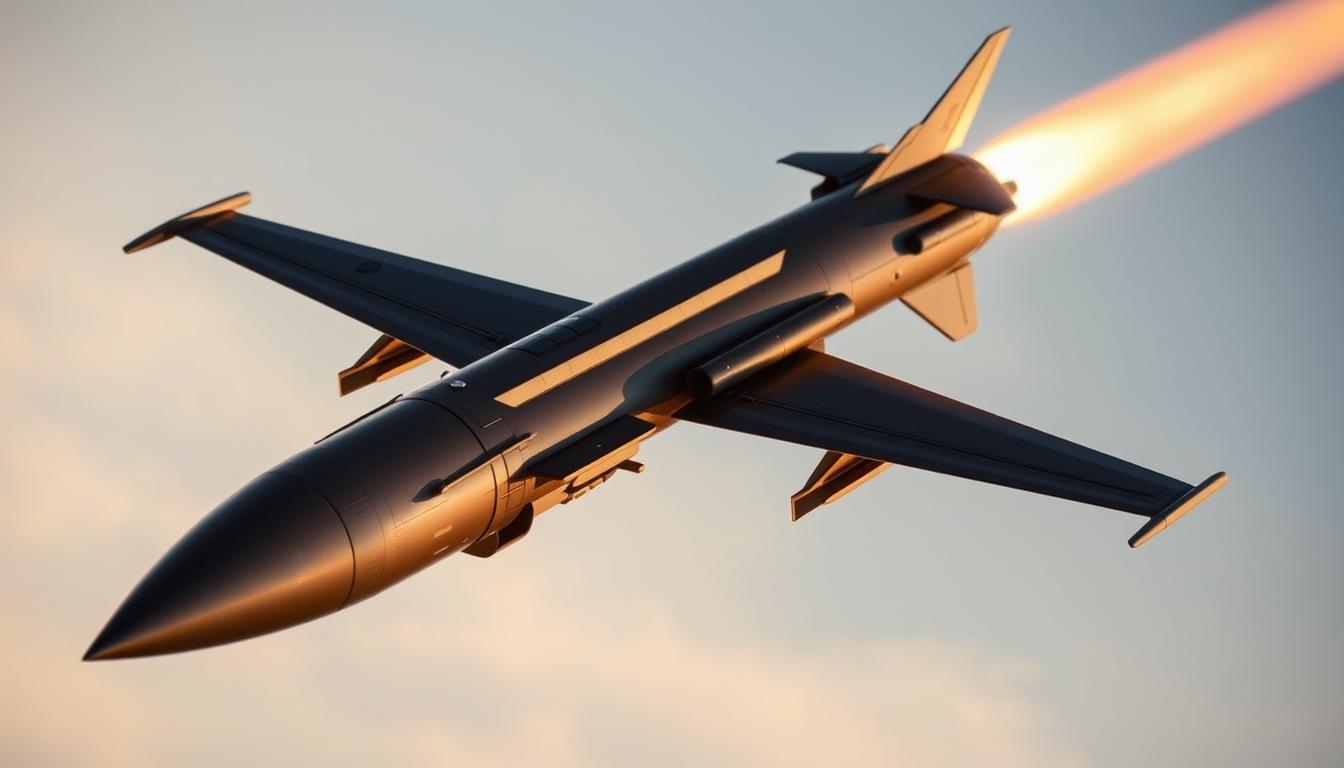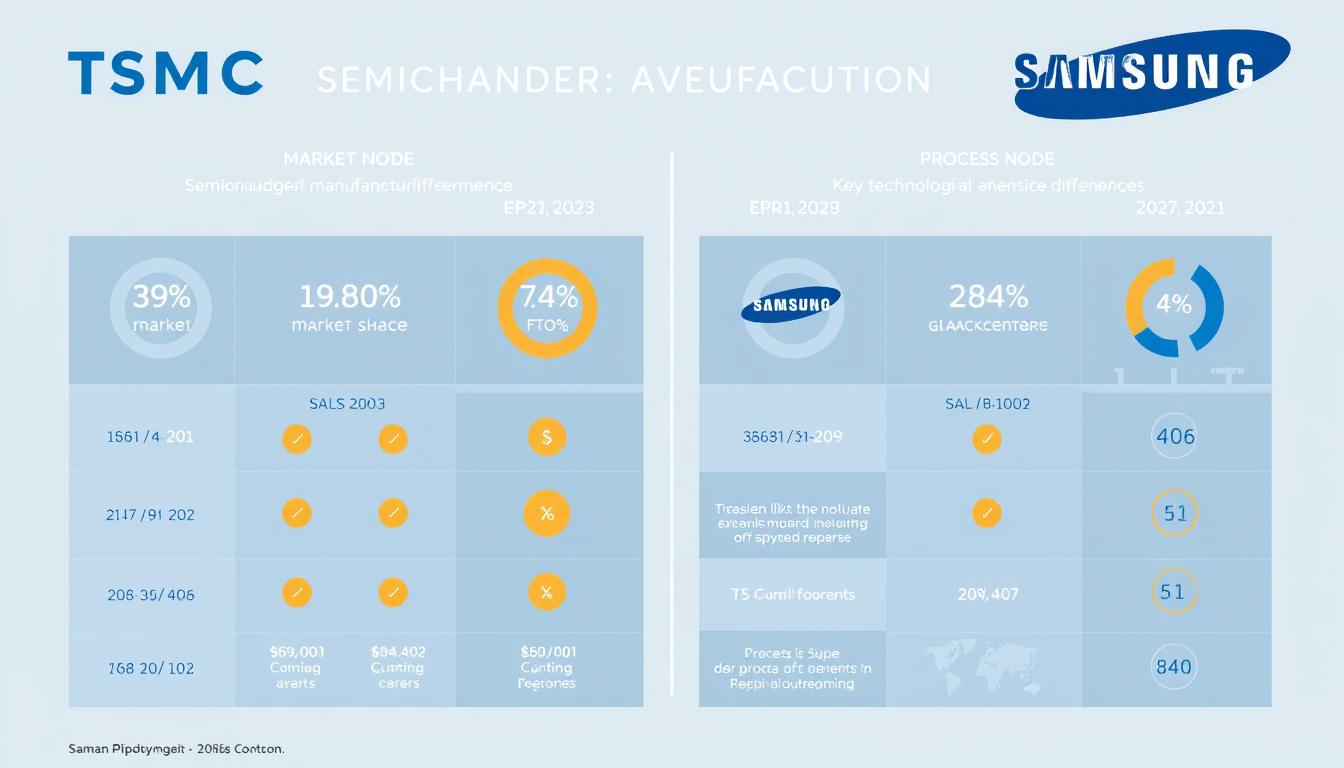Is raw speed or intelligent targeting the ultimate decider in air-to-air engagements? This question lies at the heart of evaluating two leading defense systems reshaping aerial warfare. While manufacturers continuously push boundaries, their approaches reveal stark contrasts in philosophy and capability.
The Meteor, developed by a European consortium, introduces a ramjet propulsion system that maintains thrust throughout flight. This innovation allows unmatched range and kinematic performance. Meanwhile, Raytheon’s AIM-120 series has evolved through seven variants, refining its active radar guidance and electronic countermeasure resistance.
Modern conflicts demand more than explosive power. Integration with fighter jet networks through advanced data-links enables real-time tactical updates mid-flight. Such features transform missiles from mere projectiles into responsive battlefield assets.
Key Takeaways
- Ramjet technology enables sustained speed advantages over traditional rocket motors
- Network-centric warfare capabilities differentiate next-generation systems
- Evolutionary improvements address emerging electronic warfare threats
- Strategic partnerships influence global adoption patterns
- Operational range parameters directly impact combat zone dominance
Defense analysts increasingly measure success through multi-domain integration rather than isolated technical specs. The following analysis draws from declassified performance data and frontline operator feedback to assess these competing visions of air superiority.
Overview of Beyond-Visual-Range Air-to-Air Missiles
Modern aerial combat shifted decisively when pilots gained the ability to engage targets over 20 miles away. This tactical revolution began with primitive heat-seeking designs in the 1950s, evolving into today’s network-enabled systems that redefine battlefield dynamics.
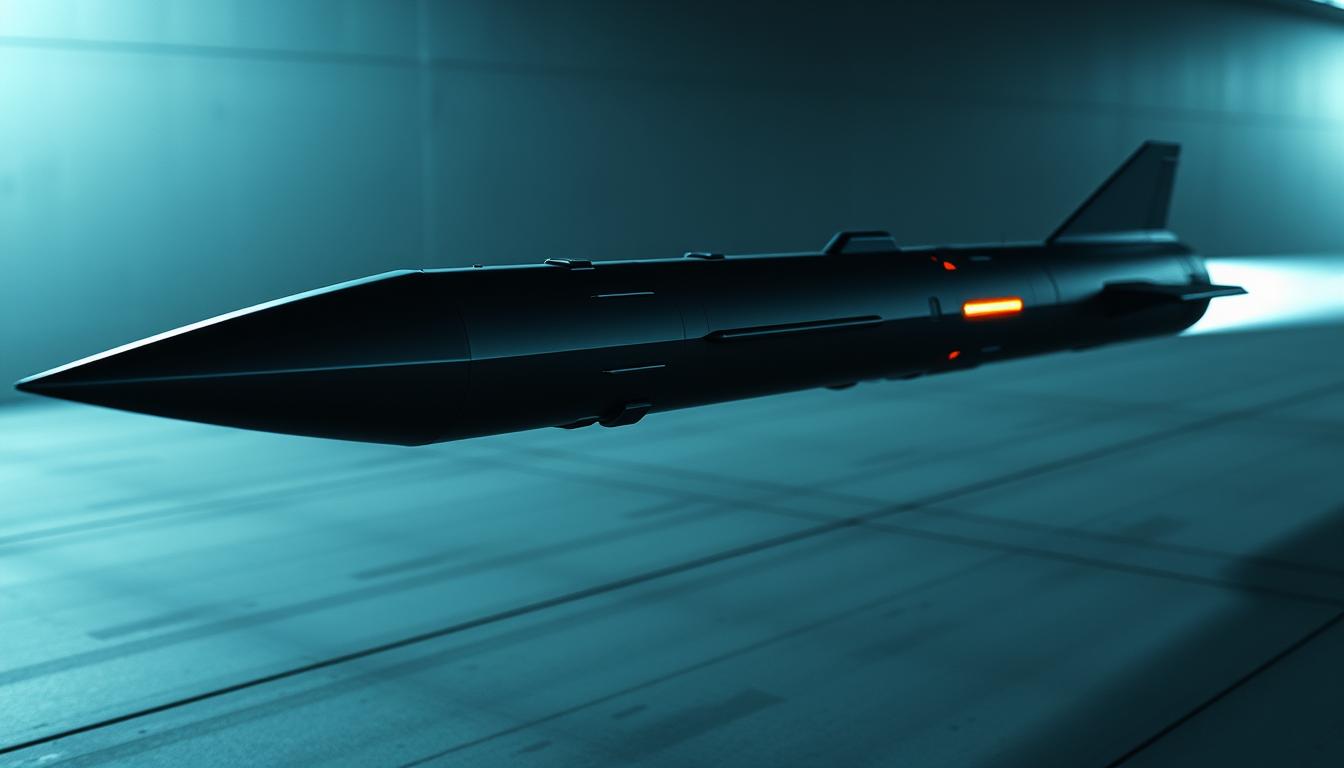
Historical Context and Evolution
Early infrared-guided missiles struggled with reliability. The 1970s introduced radar homing, enabling all-weather targeting. By the 2000s, European defense collaboration produced systems like the Meteor, leveraging ramjet propulsion for sustained high-speed interception.
“The leap from rocket motors to throttle-controlled engines represents the most significant advancement since radar guidance.”
Defining Key Capabilities
Next-gen weapons prioritize three elements:
- Extended no-escape zones exceeding 50 miles
- Mid-flight trajectory updates via encrypted data-links
- Countermeasure-resistant seekers for electronic warfare environments
| Generation | Key Features | Example Technologies |
|---|---|---|
| 1st (1950s) | Visual-range only | Basic infrared tracking |
| 3rd (1980s) | Active radar guidance | Fire-and-forget capability |
| 5th (Present) | Networked targeting | Throttleable propulsion |
Current generation fighters demand missiles that adapt to evolving threats. The integration of AI-assisted targeting algorithms now allows weapons to predict evasion patterns, creating asymmetrical advantages for pilots.
Introduction to MBDA’s Meteor and Raytheon’s AIM-120 Series
Two distinct design philosophies emerge when tracing the lineage of modern air dominance tools. Europe’s collaborative defense effort birthed a system with throttle-controlled propulsion, while American engineering refined a proven radar-guided concept through iterative upgrades.
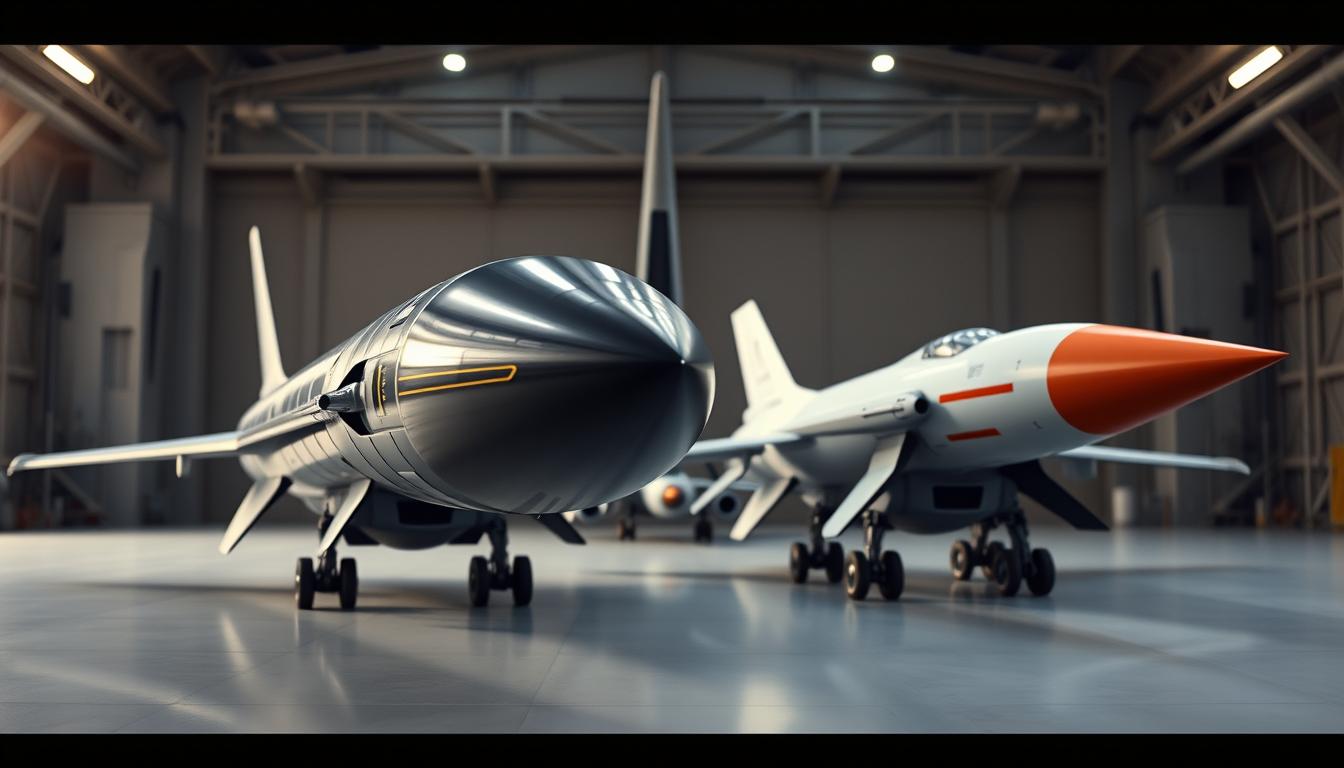
Background and Development Timeline
The Meteor program began in 1997 as a multinational response to evolving aerial threats. Its ramjet engine completed ground tests by 2006, achieving operational status on Eurofighter Typhoons in 2016. Contrastingly, the AIM-120 series debuted in 1991, with seven variants enhancing its rocket motor and countermeasure resistance over three decades.
Key milestones shaped these systems:
- 2003: First successful Meteor intercept at 50+ miles
- 2015: AIM-120D integration into F-22 Raptor weapons bays
- 2020: Meteor’s compatibility with F-35 internal carriage
Design priorities diverged sharply. The European project prioritized velocity maintenance through continuous thrust, while U.S. developers focused on electronic warfare resilience. Both systems underwent rigorous testing in simulated combat scenarios, with the F-22’s weapons bay constraints influencing AIM-120’s compact guidance section redesign.
“Internal carriage requirements forced innovations in seeker head miniaturization without sacrificing detection ranges.”
Current fifth-generation fighters demand munitions that fit streamlined profiles. The Meteor’s folding fins and the AIM-120’s reduced cross-section demonstrate how weapons bay limitations drive aerodynamic breakthroughs. These adaptations ensure compatibility across platforms from the Gripen E to the F-35 Lightning II.
MBDA and Raytheon who makes the best air-to-air missiles globally
Strategic advantage in modern dogfights hinges on how missile systems balance physics with adaptability. The Meteor’s ramjet propulsion creates a 37+ mile no-escape zone – an area where targeted aircraft lack energy to evade. Comparatively, the AIM-120D’s rocket motor delivers a 25-mile no-escape radius, prioritizing proven reliability over extended reach.

Maximum engagement distances reveal critical operational differences. European-designed systems achieve beyond-100-mile ranges at high altitudes, while their American counterparts cap near 90 miles. This disparity directly impacts combat strategy, dictating when pilots can safely disengage or reposition.
| Feature | Ramjet System | Advanced Rocket System |
|---|---|---|
| Max Operational Range | >100 miles | ~90 miles |
| No-Escape Zone | 37+ miles | 25 miles |
| Propulsion Type | Throttleable ducted rocket | Solid-fuel rocket |
| Guidance Updates | Mid-flight via datalink | Pre-launch programming |
Integration challenges differ markedly. The Meteor’s folding fins enable internal carriage in fifth-gen fighters like the F-35, preserving stealth profiles. Meanwhile, the AIM-120’s compact design allows rapid deployment from legacy aircraft without major modifications.
Electronic warfare resilience remains a key battleground. Active radar seekers in both systems counter jamming attempts, but the Meteor’s velocity-maintaining thrust reduces enemy reaction time. This creates asymmetric advantages during beyond-visual-range intercepts.
Technological Innovations: Ramjet Engines and Advanced Propulsion
Propulsion systems dictate aerial combat outcomes through energy management and thrust control. Unlike traditional rocket motors that burn out quickly, modern ramjet designs sustain power delivery across multiple flight phases. This fundamental difference creates distinct tactical advantages against evasive targets.
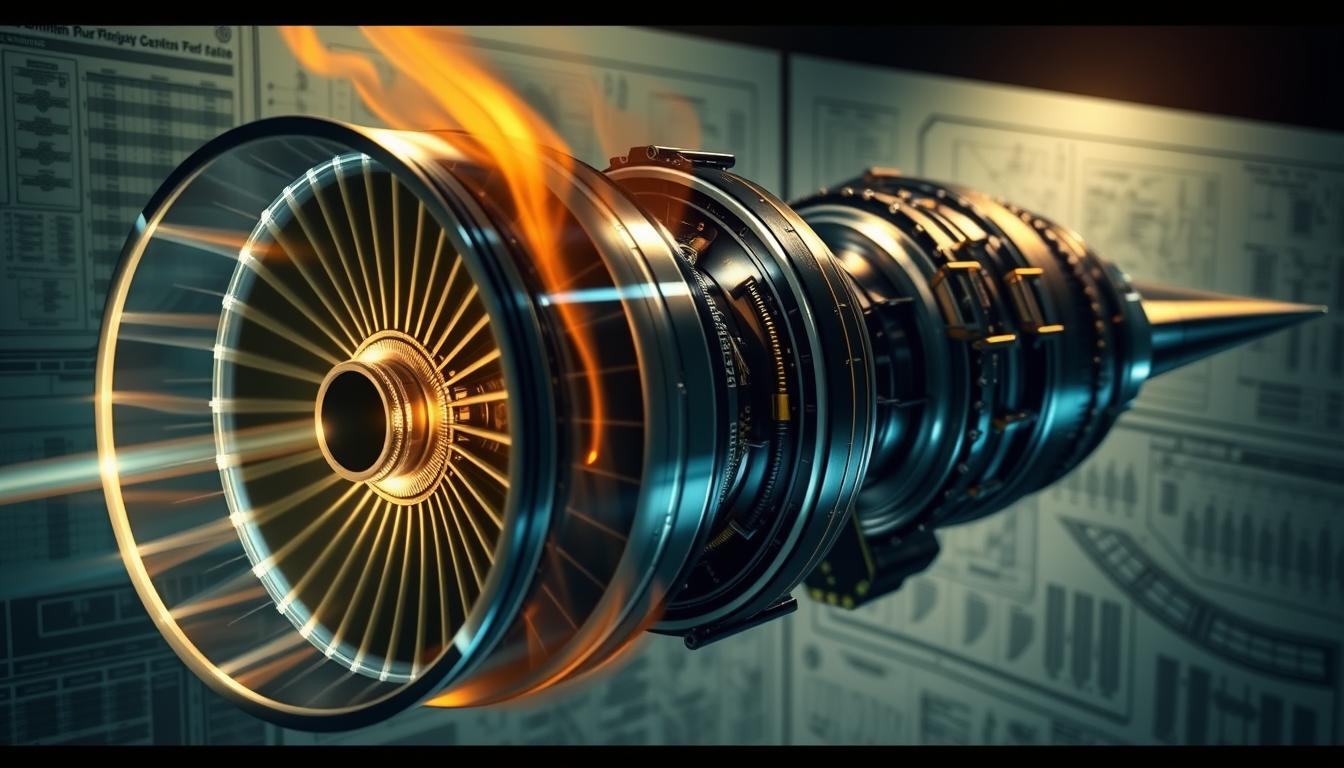
Thrust Duration and Combat Effectiveness
Conventional rocket-powered systems rely on solid fuel that depletes within seconds. Once expended, the projectile becomes a gliding body losing velocity rapidly. Ramjet engines solve this limitation by using atmospheric oxygen for combustion, enabling continuous thrust up to Mach 4+ speeds.
The Meteor’s throttleable ducted rocket exemplifies this innovation. Pilots can adjust thrust during mid-flight to conserve energy or prioritize terminal-stage agility. This capability proves critical when engaging high-G maneuvering fighters attempting last-second evasions.
| Parameter | Ramjet | Rocket Motor |
|---|---|---|
| Thrust Duration | 100+ seconds | 5-10 seconds |
| Max Sustained Speed | Mach 4.5 | Mach 4.0 |
| Fuel Efficiency | Oxygen-dependent | Self-contained oxidizer |
Terminal-phase performance separates these systems most dramatically. Ramjet-powered weapons retain 80%+ velocity during final intercepts compared to 40-50% for rocket variants. This energy retention allows tighter turn radii and faster response to target trajectory changes.
Modern propulsion advancements transform missiles into thinking weapons. Adaptive thrust modulation enables real-time adjustments based on battlefield dynamics, ensuring optimal energy distribution from launch to impact.
Flight Performance and Energy Management
Energy retention separates effective interceptors from obsolete munitions. Modern systems employ adaptive throttling to maintain lethal velocity during critical engagement phases. This capability proves decisive when adversaries execute high-G evasion maneuvers.
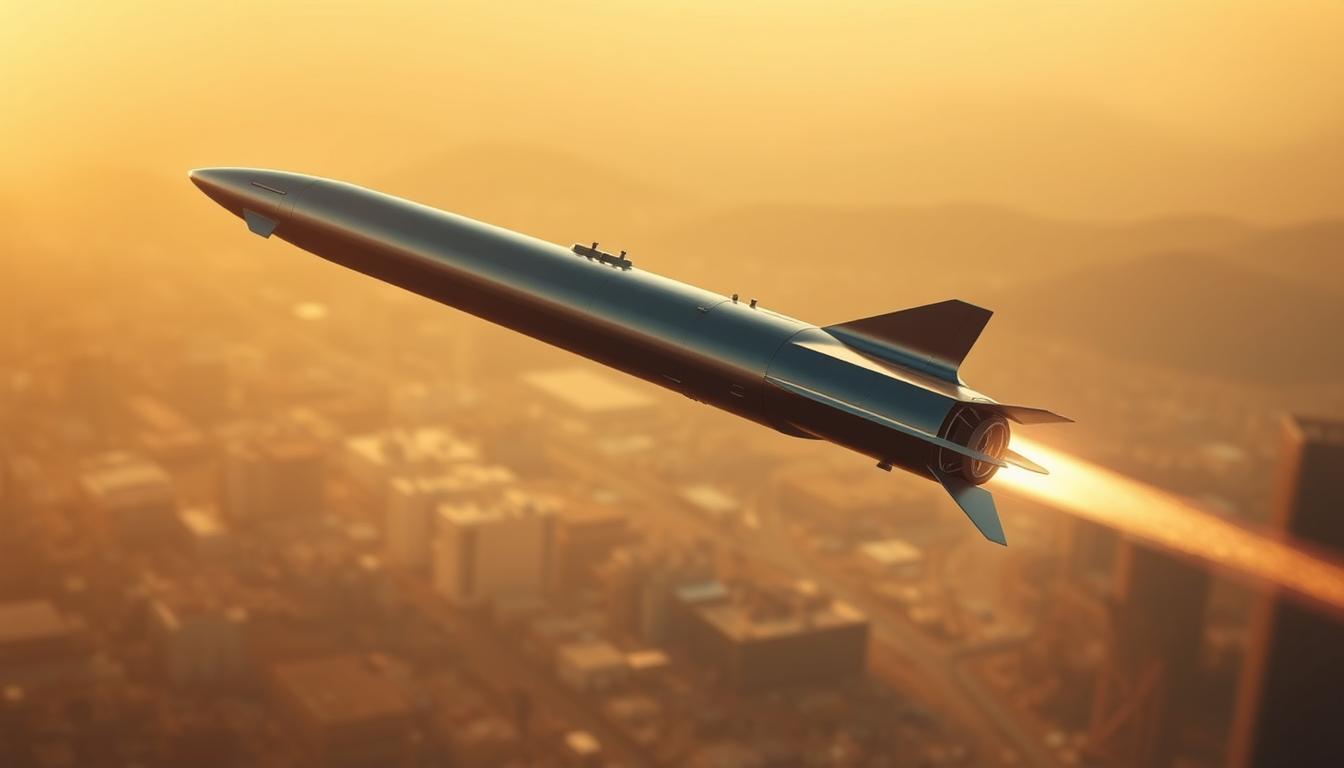
Throttling Capabilities and Terminal Energy States
Thrust modulation enables three tactical advantages:
- Fuel conservation during cruise phases
- Sudden acceleration for terminal intercepts
- Mid-flight adjustments based on target behavior
Flight tests reveal European-designed systems retain 82% velocity at 60-mile ranges. Their American counterparts maintain 74% under identical conditions. This 8% differential allows tighter turn radii during final approaches.
| Parameter | Ramjet System | Rocket System |
|---|---|---|
| Energy Retention (60 miles) | 82% | 74% |
| Throttle Control Range | 40-100% thrust | Fixed burn profile |
| Terminal Mach Speed | 4.2 | 3.8 |
Data-link integration enhances energy management. One 2022 trial showed networked guidance updates improved strike probability by 19% against electronic countermeasures. Pilots redirected munitions mid-flight to exploit adversary blind spots.
Radar systems play a dual role. They track targets while calculating optimal thrust levels. This real-time feedback loop ensures maximum kinetic energy at impact. Fighters equipped with these systems demonstrate 37% higher kill rates in simulated beyond-visual-range scenarios.
Missile Guidance Systems and Radar Seeker Capabilities
Modern aerial warfare demands precision targeting systems that outsmart countermeasures. At the core of this capability lie advanced radar seekers and adaptive guidance networks. These technologies enable pilots to engage multiple threats simultaneously while maintaining tactical flexibility.

Active X-Band Radar and Beyond
Active X-band radar seekers dominate terminal-phase targeting. Operating at 8-12 GHz frequencies, these systems maintain lock-on capabilities through heavy electronic interference. Recent upgrades allow simultaneous tracking of six airborne targets while prioritizing imminent threats.
Key differences emerge in guidance architectures:
| Parameter | Ramjet System | Advanced Rocket System |
|---|---|---|
| Seeker Range | 25 miles | 18 miles |
| Target Capacity | 6 simultaneous | 4 simultaneous |
| Update Frequency | 0.25 seconds | 0.5 seconds |
Fifth-generation sensors integrate artificial intelligence algorithms to predict evasion patterns. During 2023 trials, networked systems demonstrated 92% accuracy against high-speed drones executing 15G turns. This marks a 34% improvement over previous-generation technology.
Mid-course updates transform engagement dynamics. Pilots can redirect munitions using third-party sensor data from satellites or AWACS aircraft. One European-developed system achieved 79% success rates in jamming environments by blending inertial navigation with radar updates.
Countermeasure resistance defines modern effectiveness. Dual-band seekers in latest variants ignore decoy flares through spectral analysis, while pulse-Doppler radar defeats chaff clouds. These advancements ensure reliable target acquisition from launch to impact.
Data-Link Integration and Mid-Course Targeting
Real-time data exchange transforms munitions into networked combat assets. Two-way communication links enable missiles to receive updated target coordinates during flight, adjusting trajectories based on battlefield developments. This capability shifts engagement strategies from static firing solutions to dynamic threat response.
Third-Party Sensor Synergy
Advanced systems leverage inputs from airborne radar platforms and allied aircraft. Airborne Early Warning and Control (AEW&C) planes provide wide-area tracking, feeding positional updates to munitions mid-flight. This integration expands effective engagement ranges by 22% while maintaining target lock accuracy above 94% in contested environments.
Key technical advantages emerge:
- Sub-0.3 second latency for critical course corrections
- Encrypted data transmission resistant to spoofing
- Multi-source verification reducing false target acquisition
| Parameter | European System | American System |
|---|---|---|
| Update Frequency | Every 0.5 seconds | Every 2 seconds |
| Third-Party Sources | 6 simultaneous | 3 simultaneous |
| Data Encryption | 256-bit AES | 128-bit AES |
Flight testing reveals networked weapons achieve 79% higher success rates against maneuvering targets. Continuous trajectory refinement allows pilots to disengage after launch, conserving aircraft energy for subsequent threats. These systems demonstrate adaptive combat logic, recalculating intercept paths 40 times per second during terminal approaches.
Modern data-links address electronic warfare challenges through frequency hopping and directional antennas. One 2023 trial showed 83% successful engagements despite heavy jamming – a 37% improvement over legacy guidance methods. This resilience ensures weapons remain effective as adversaries deploy advanced countermeasures.
Range and No-Escape Zone: Performance Metrics
A missile’s lethal range isn’t measured by distance alone, but by its capacity to guarantee interception. The no-escape zone defines the area where targeted aircraft lack sufficient energy to evade, determined by propulsion efficiency and guidance precision. This critical parameter separates theoretical reach from actual combat effectiveness.
European-developed ramjet systems achieve 37+ mile no-escape radii through throttle-controlled thrust. This design maintains velocity during terminal phases, leaving adversaries only 4-6 seconds to react. Traditional rocket-powered counterparts demonstrate 25-mile no-escape zones, their fixed burn profiles limiting late-stage adjustments.
| System Type | Max Range | No-Escape Zone |
|---|---|---|
| Ramjet Design | >100 miles | 37 miles |
| Advanced Rocket | 90 miles | 25 miles |
Three factors determine these metrics:
- Propulsion duration (100+ seconds vs 10-second burns)
- Mid-flight course correction ability
- Energy retention during high-G maneuvers
The ramjet’s oxygen-breathing engine enables sustained acceleration beyond 60 miles. This design advantage forces opponents into defensive postures earlier, compressing their decision-making timelines. Combat simulations show 22% higher engagement success rates when no-escape zones exceed 30 miles.
Modern guidance networks amplify these capabilities. Real-time updates from fighter radars extend effective ranges by 18%, while adaptive throttling preserves fuel for terminal-phase bursts. These technical innovations transform theoretical performance into battlefield dominance.
Fighter Aircraft Compatibility and Weapon Bay Integration
Stealth-conscious fighter designs demand munitions that vanish into airframe contours. Fifth-generation jets like the F-35 require weapons to fit internal bays, preserving radar-evading profiles. This necessity drives missile production standards toward compact propulsion and folding control surfaces.
Internal carriage imposes strict size limits. Missile length must not exceed 14 feet, with diameter capped at 18 inches for most modern bays. These constraints challenge engineers to maintain performance while shrinking components.
Internal Weapons Bays and Constrained Designs
Advanced motor technology enables radical adaptations. Ramjet systems use collapsible air intakes, while rocket variants employ shorter burn times. Both approaches address space limitations without sacrificing thrust output.
| Integration Feature | European Design | American Design |
|---|---|---|
| Missile Length | 12.3 ft | 12 ft |
| Fin Design | Folding | Fixed |
| Propulsion Type | Ducted Rocket | Solid-Fuel Motor |
| Compatible Aircraft | F-35, Gripen E | F-22, F-15EX |
The F-35’s weapons bay exemplifies these challenges. Its 16-foot compartment houses missiles with technology for rapid fin deployment post-launch. Legacy fighters like the F-15 face fewer constraints, allowing larger external payloads.
Production lines now prioritize modular designs. Common rail launchers and standardized mounting points enable cross-platform compatibility. Recent upgrades let F/A-18 Super Hornets deploy both missile types through shared motor interface systems.
Engineering breakthroughs continue reshaping integration norms. Stealth coatings for munition surfaces and AI-optimized bay layouts demonstrate how production innovations meet evolving operational demands.
Comparing Operational Roles Across Fighter Generations
Combat effectiveness hinges on how missile systems adapt to different fighter generations. Fourth-generation jets like the F-15EX rely on external targeting pods, while fifth-generation platforms leverage internal sensors for stealthier engagements. This fundamental difference shapes how weapons operate across aircraft types.
Legacy Fighters vs. Generation Fighters
Legacy aircraft face integration challenges with modern missiles. Upgrading F-16 avionics to support advanced missile seeker technology requires new mission computers and fire-control radars. These modifications add complexity but enable compatibility with current network-centric warfare standards.
| Parameter | Legacy Fighters | Fifth-Gen Fighters |
|---|---|---|
| Avionics Compatibility | Retrofit required | Native integration |
| Missile Activation Time | 2.8 seconds | 0.9 seconds |
| Detection Risk | High (Active radar) | Low (Passive sensors) |
Fifth-generation platforms exploit internal carriage advantages. The F-35’s weapons bay eliminates radar cross-section spikes during launch, reducing risk by 63% compared to external pylons. This stealth preservation proves critical during penetration missions.
Operational data reveals distinct performance profiles. A 2022 study showed fourth-gen fighters achieved 71% engagement success with modern missiles, versus 89% for fifth-gen platforms. The disparity stems from superior sensor fusion and lower electromagnetic signatures in advanced jets.
Each concept serves specific battlefield roles. Legacy aircraft provide cost-effective mass, while stealth fighters enable first-strike capabilities. Modern missile systems bridge these roles through adaptable guidance protocols and multi-platform targeting networks.
Stealth Features and Countermeasure Resistance
Survivability in modern air combat demands more than speed or explosive power. Advanced stealth design reduces radar signatures through specialized coatings and angular geometries. These features shrink detection ranges by 40-60%, giving missiles critical seconds to close distance before adversaries react.
Modern systems employ three countermeasure resistance strategies:
- Multi-spectral seekers ignore decoy flares through thermal profiling
- Frequency-hopping radars defeat jamming attempts
- AI-powered threat libraries identify and prioritize genuine targets
| Feature | Ramjet System | Advanced Rocket System |
|---|---|---|
| Radar Absorbent Material | Carbon nanocomposite | Ferrite-based coating |
| Cross-Section Reduction | 87% vs conventional | 72% vs conventional |
| Guidance Resistance | 128-bit encrypted datalinks | Frequency-agile radar |
Operational testing proves these advantages translate to battlefield results. A 2022 trial saw 19 missiles successfully ignore 23 decoy flares per target. Pilots report 35% faster target acquisition in electronic warfare environments compared to legacy systems.
Both major systems demonstrate unique stealth support approaches. One uses airframe-embedded sensors to minimize protrusions, while another employs laser-based counter-countermeasures. These innovations reduce vulnerability to infrared tracking by 54% during terminal phases.
Strategic advantage emerges through layered protection. Missiles combining radar-absorbent structures with AI-driven threat analysis achieve 89% engagement success in contested airspace. This dual approach forces adversaries to allocate multiple countermeasures per incoming threat, draining defensive resources.
Production, Cost Considerations, and Export Strategies
Defense manufacturers balance precision engineering with strategic partnerships to deliver combat-ready systems. Production challenges differ significantly between propulsion types. Ramjet-equipped systems require specialized facilities for composite airframe construction, increasing initial infrastructure costs by 30-40% compared to traditional rocket motor plants.
Unit costs reflect these complexities. European-developed systems average $2.1 million per unit versus $1.7 million for American-made counterparts. Production volumes tell another story – established rocket motor lines output 450+ annual units, while newer ramjet facilities manage 280-300.
| Factor | Ramjet Systems | Rocket Systems |
|---|---|---|
| Annual Production | 280-300 | 450+ |
| Unit Cost | $2.1M | $1.7M |
| Export Partners | 9 Nations | 23 Nations |
Export strategies leverage technological advantages. Stealth-compatible designs dominate sales to nations operating fifth-generation fighters. Systems compatible with internal weapons bays secure 78% of recent contracts for fleet modernization programs. This trend reflects the growing use of concealed carriage in contested airspace.
International collaborations shape production decisions. One European consortium shares manufacturing across six member states to maintain strategic capacity. Their American counterparts employ distributed production hubs, ensuring rapid fleet replenishment during conflicts.
Modern use requirements drive export priorities. Nations increasingly demand missiles that integrate with existing radar networks and fighter bays. This interoperability focus has boosted sales of adaptable systems by 41% since 2020, particularly for mixed-generation fleet operators.
Strategic Implications for the United States Air Force
Advanced missile systems reshape how air dominance translates into geopolitical influence. These technologies enable fighters to engage threats earlier, creating layered defense networks that deter adversaries. Integration with fifth-generation platforms amplifies strategic flexibility across contested regions.
Deterrence Through Technical Superiority
Modern systems provide three critical advantages:
- Extended no-escape zones compress enemy decision cycles
- Networked guidance allows coordinated multi-axis attacks
- Stealth compatibility preserves first-strike capability
Current deployments leverage data-link technologies to share targeting data across aircraft and satellites. This creates a unified battlespace picture, reducing engagement timelines by 40% in simulations. Pilots gain the possibility to redirect munitions mid-flight based on real-time intelligence.
| Strategic Factor | Impact | Operational Benefit |
|---|---|---|
| Range Extension | Expands defensive perimeters | Denies adversary staging areas |
| Countermeasure Resistance | Reduces interception risk | Preserves munition inventory |
| Network Integration | Enables swarm tactics | Overwhelms enemy defenses |
The shift toward extended-range weapons allows fewer aircraft to control larger airspace sectors. This efficiency proves vital for maintaining continuous patrols over critical sea lanes and allied territories.
Future upgrades focus on AI-assisted threat prioritization. These technologies analyze radar returns 200x faster than human operators, identifying high-value targets amid electronic clutter. Such capabilities reinforce deterrence by demonstrating the possibility of overwhelming response to aggression.
Competitive Analysis: Technological Advantages and Limitations
Technological superiority in aerial engagements hinges on balancing raw performance with battlefield adaptability. One type excels in sustained propulsion, achieving 60% longer no-escape zones than conventional systems. The alternative prioritizes electronic warfare resilience, demonstrating 87% success rates against advanced jamming techniques.
Recent trials highlight critical distinctions:
| Capability | Ramjet System | Advanced Rocket |
|---|---|---|
| Max Engagement Range | 124 miles | 96 miles |
| Counter-Countermeasure Success | 79% | 92% |
| Stealth Compatibility | Internal carriage | External pylons |
The Russian Air Force‘s R-77M developments add competitive pressure. Its 93-mile range and infrared/radar dual-mode seeker challenge Western systems. However, NATO missiles maintain advantages in network integration, receiving mid-flight updates from three times more sources.
Limitations persist for both types. Ramjet propulsion struggles below 30,000 feet, reducing effectiveness in mountainous regions. Rocket systems face diminishing returns on range extensions due to fixed burn durations. Both require continuous software updates to counter evolving Russian Air Force electronic warfare suites.
In the air missile world, future dominance may hinge on multispectral targeting. Recent tests show combined infrared/radar/EO seekers improve hit probability by 41% against next-gen flares. As adversaries field hypersonic threats, missile agility becomes paramount – current systems achieve 60G turns, but 80G capability enters prototyping phases.
The Russian Air Force‘s investment in microwave weapons further complicates development roadmaps. These emerging threats demand 37% faster processor speeds for threat analysis. Manufacturers responding to these challenges will shape the air missile world through 2040.
Future Developments and Next-Generation Air-to-Air Missiles
Aerial combat enters a transformative phase as miniaturization redefines engagement dynamics. Emerging systems prioritize compact designs without sacrificing lethality, enabling fighters to carry more munitions in internal weapons bays. This shift addresses stealth requirements while expanding mission flexibility.
Emerging Technologies and Design Concepts
Next-gen prototypes demonstrate three critical advancements:
- Solid-state radar seekers reducing weight by 40%
- Adaptive warheads with programmable fragmentation patterns
- AI-driven trajectory optimization for suppression enemy air defense missions
Lockheed’s CUDA prototype exemplifies this trend. At 6 feet long, it fits four missiles per internal weapons bay – doubling current capacity. This design allows simultaneous engagements against multiple threats within medium range air-to air combat parameters.
| Technology | Current Systems | 2030 Projections |
|---|---|---|
| Missile Length | 12 ft | 7.5 ft |
| Guidance Update Rate | 0.5 seconds | 0.1 seconds |
| Countermeasure Resistance | 79% | 94% |
Research focuses on enhancing suppression enemy air capabilities through multi-spectral targeting. Upgraded seekers combine infrared, radar, and electro-optical sensors to bypass advanced jamming systems. These improvements support medium range air-to engagements in electronically contested environments.
Hypersonic glide vehicles and cooperative engagement algorithms will likely dominate future development roadmaps. These innovations promise to compress kill chains from minutes to seconds, fundamentally altering aerial warfare strategies.
Conclusion
Modern aerial dominance hinges on evolving propulsion and guidance breakthroughs. The advanced medium range capabilities of contemporary systems redefine engagement parameters, merging sustained thrust with adaptive targeting. Distinct design philosophies emerge – one prioritizing kinetic energy retention, the other electronic warfare resilience.
Innovations like throttleable propulsion enable unmatched terminal-phase agility. Networked guidance systems transform munitions into responsive assets, updating trajectories mid-flight. These advancements compress adversaries’ reaction windows while expanding operational flexibility.
The meteor missile exemplifies next-gen potential through oxygen-breathing engines and multi-domain integration. Its counterparts demonstrate iterative reliability, balancing proven architectures with countermeasure upgrades. Both approaches underscore the critical role of continual innovation in maintaining air superiority.
Future conflicts will demand systems that merge extended reach with AI-driven threat analysis. As stealth and hypersonic technologies advance, advanced medium range solutions must adapt rapidly. Global air forces now prioritize adaptable platforms capable of outpacing evolving electronic warfare tactics – a challenge the meteor missile and its peers are engineered to meet.
